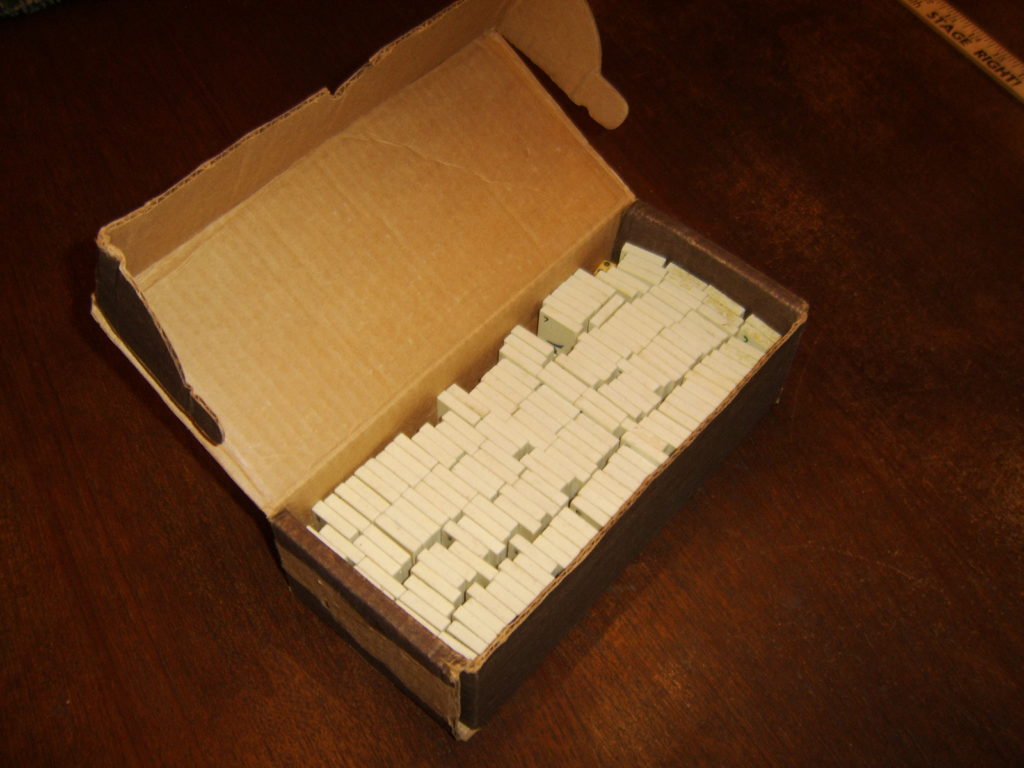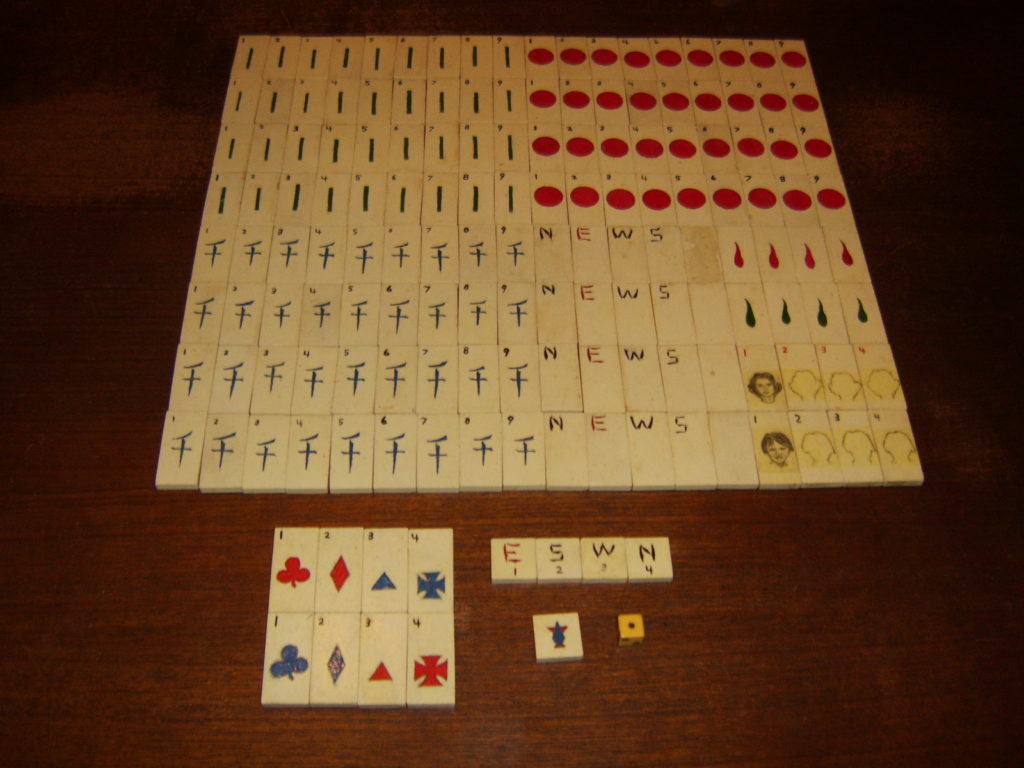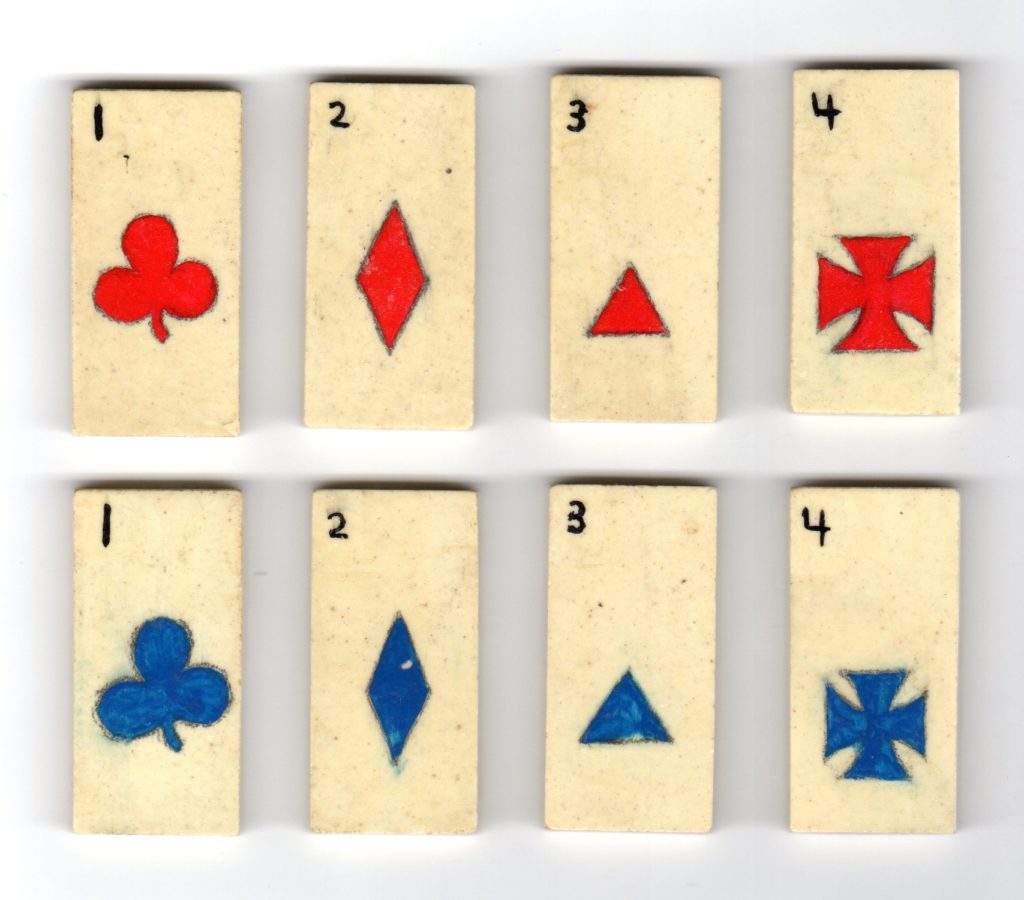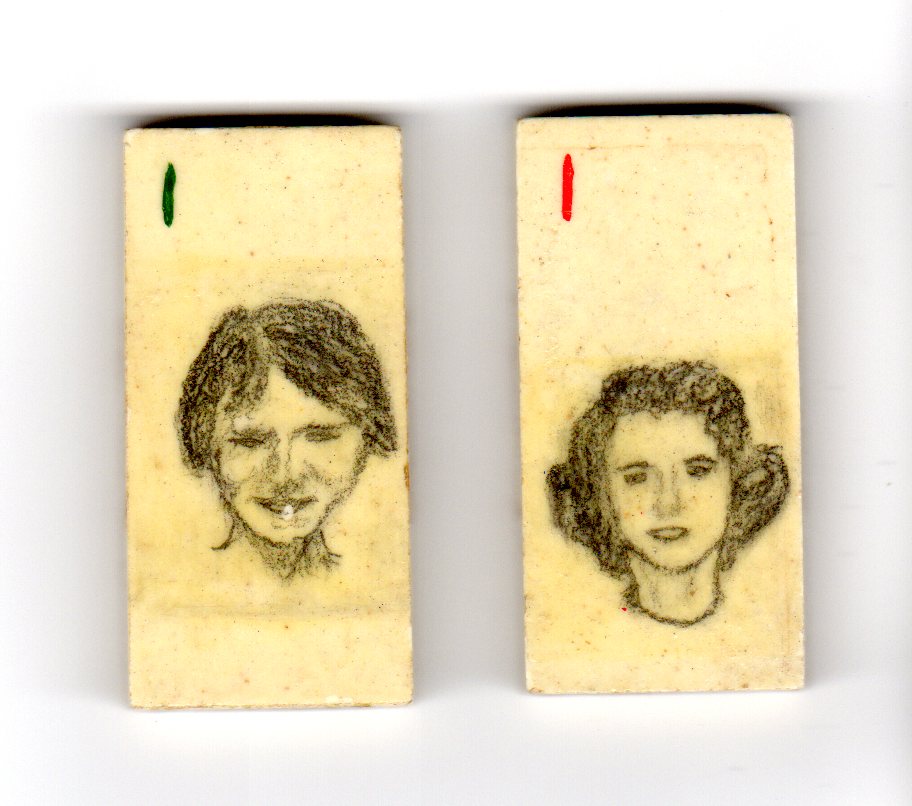Many of us come across interesting handmade sets, and most of the time we have no idea where they came from, or their story. This time we are lucky: we can see the set and know how it came about 55 years ago! The tile suits are unique in design, as are the Jokers and Flowers, but I think we could all be ready to play with it with only a few seconds of "which tile is which."
A while ago I gave a talk, and afterwards a woman approached me to tell me that her husband had a set made of ceramic tiles. Of course I was intrigued, and I asked her to email me photos of the set. I received them the other day. So here is the story, from the tile set's artist.
"My wife and I enjoyed your recent talk about the art of mah jongg. The variety of styles and designs of the tiles is amazing. My wife mentioned that I had made a set of tiles in the early 1960s, and you told her that you would like a picture of the set. Well, here you go . . . This is the first time that the entire set has been out of the box in I don't know how many years. I don't think I've ever actually played a game with it.
You talked about how so many mah jongg designs tell stories. My set doesn't tell a story, but, yes, it does have one. I had a friend in high school whose family played mah jongg. I joined them several times and enjoyed the game. They recommended a book about how to play - I know I still have it packed in a box somewhere. I started making myself a set out of ceramic tiles, and I finished it probably around 1962.
The designs are painted with enamel and then sealed with nail polish.
The "cracks" feature a stylized F - for Foreman.
The white dragons are blank tiles. If I were making them today I would probably have painted black flame shapes to match the green and red ones.
The eight tiles with the shape designs may be the "jokers". The shapes are copied from Corps insignia of the Union army in the Civil War.

I don't remember the purpose of the four small tiles with E, S, W, and N. (ED: These would be the Wind indicators, to convey which Round is being played. In some versions of the game, the first four games are the East Round, the next four the South Round, etc. These are important for many reasons, including getting the right Flower or wind can give you extra points in a game.)
The other small tile, with the design, was intended to be passed to whoever is "East."
(Seen just under the ESWN in the 2nd photo. You will notice that the E is a different color from the other Winds, and the case in the Wind tiles as well. Having the East be a different color can also be the case with racks: you will get a set with four racks, one being a different color. This helped to indicate who was the first person to start off being East in the round of four games.)
(ED: Many of us who are East pass the dice to indicate who will be East the next game)




